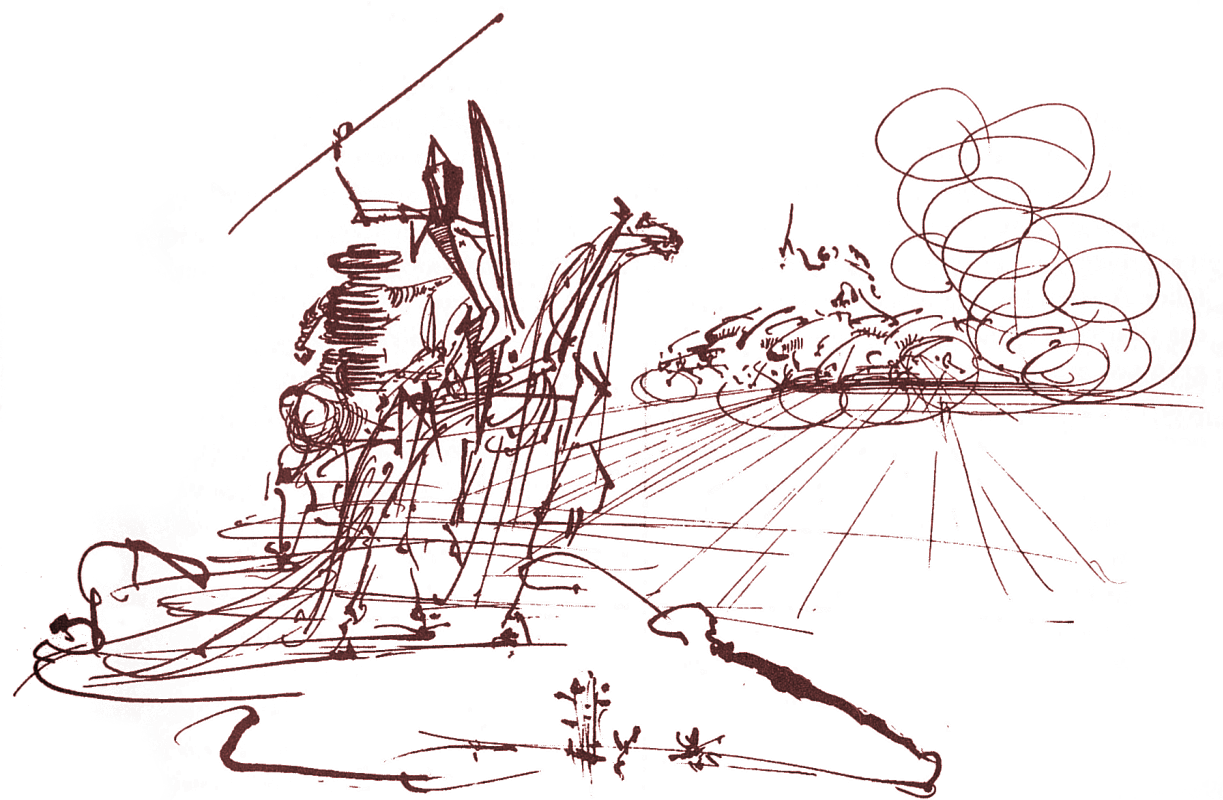Through the vistas of time a voice still cries to every potential Peter, "Put up your sword!" The shores of history are white with the bleached bones of nations and communities that failed to follow this commandment..
The alternative to violence is nonviolent resistance. This method was made famous by Mohandas K. Gandhi, who used it to free India from the domination of the British Empire. Five points can be made concerning nonviolence as a method in bringing about better racial conditions.
First, this is not a method for cowards; it does resist. The nonviolent resistor is just as strongly opposed to the evil against which he protests as is the person who uses violence. His method is passive or nonagressive in the sense that he is not physically aggressive towards his opponent. But his mind and emotions are always active, constantly seeking to persuade the opponent that he is mistaken. This method is passive physically, but dynamically aggressive spiritually.
A second point is that nonviolent resistance does not seek to defeat or humiliate the opponent, but to win his friendship and understanding. The nonviolent resister must often express his protest through noncooperation or boycotts, but he realizes that noncooperation and boycotts are not ends in themselves; they are merely a means to awaken a sense of moral shame in the opponent. The end is redemption and reconciliation. The aftermath of nonviolence is the creation of the beloved community, while the aftermath of violence is tragic bitterness.
A third characteristic of this method is that the attack is directed against forces of evil rather than against persons who are caught in those forces. It is evil we are seeking to defeat, not the persons victimized by evil. Those of us who struggle against racial injustice must come to see that the basic tension is not between races. As I like to say to the people in Montgomery, Alabama: "The tension in this city is not between white people and Negro people. The tension is at bottom between justice and injustice, between the forces of light and the forces of darkness. And if there is a victory it will be a victory not merely for 50,000 Negroes, but a victory for justice and the forces of light. We are out to defeat injustice and not white persons who may happen to be unjust."
A fourth point that must be brought out concerning nonviolent resistance is that it avoids not only external physical violence but also internal violence of spirit. At the center of non-violence stands the principle of love. In struggling for human dignity the oppressed people of the world must not allow themselves to become bitter or indulge in hate campaigns. To retaliate with hate and bitterness would do nothing but intensify the hate in the world. Along the way of life, someone must have sense enough and morality enough to cut off the chain of hate. This can be done only by projecting the ethics of love to the center of our lives.
In speaking of love at this point, we are not referring to some sentimental emotion. It would be nonsense to urge men to love their oppressors in an affectionate sense. "Love" in this connection means understanding good will. There are three words for love in the Greek New Testament. First, there is eros. In Platonic philosophy eros meant the yearning of the soul for the realm of the divine. It has come now to mean a sort of aesthetic or romantic love. Second, there is philia. It meant intimate affectionateness between friends. Philia denotes a sort of reciprocal love: the person loves because he is loved. When we speak of loving those who oppose us we refer to neither eros nor philia; we speak of a love which is expressed in the Greek word agape. Agape means nothing sentimental or basically affectionate; it means understanding, redeeming good will for all men, an overflowing love which seeks nothing in return. It is the love of God working in the lives of men. When we love on the agape level we love men not because we like them, not because their attitudes and ways appeal to us, but because God loves them. Here we rise to the position of loving the person who does the evil deed while hating the deed he does.
Finally, the method of non-violence is based on the conviction that the universe is on the side of justice. It is this deep faith in the future that causes the non-violent resister to accept suffering without retaliation. He knows that in his struggle for justice he has cosmic companionship. This belief that God is on the side of truth and justice comes down to us from the long tradition of our Christian faith. There is something at the very center of our faith which reminds us that Good Friday may reign for a day, but ultimately it must give way to the triumphant beat of the Easter drums. Evil may so shape events that Caesar will occupy a palace and Christ a cross, but one day that same Christ will rise up and split history into A.D. and B.C., so that even the life of Caesar must be dated by his name. So in Montgomery we can walk and never get weary, because we know that there will be a great camp meeting in the promised land of freedom and justice.

